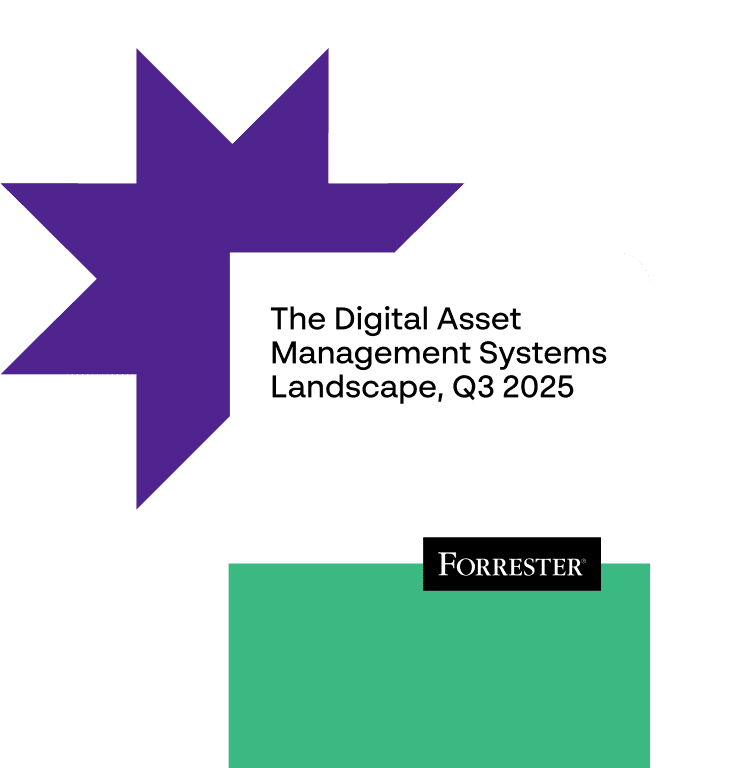Retail is changing at record speed. According to Forrester, online retail spending in the United States will grow twice as fast as total retail spending through 2029, accounting for 29% of all retail sales. For marketing teams, that surge translates into one thing—an explosion of content needs.
Every new product launch, seasonal promotion, or localized marketing campaign requires consistent, engaging content across multiple channels. Add the growing use of AI-generated assets, and managing this complexity becomes unmanageable without the right technology.
That’s why Digital Asset Management in retail is no longer optional. The latest Forrester Digital Asset Management Systems Landscape, Q3 2025 highlights retail as a key industry driving increased DAM investment. For marketers, a digital asset management solution has become the command center for content operations—a system to scale personalization, protect brand value, and ensure agility in an always-on marketplace.
Why Digital Asset Management in retail is now essential
Retail marketers operate in one of the most content-heavy environments. Product catalogs are expanding, customer experiences are multiplying, and digital marketing campaigns need to adapt to local languages, cultures, and regulations.
Forrester’s research shows retailers are among the fastest adopters of digital asset management DAM because of this rising complexity. A modern asset management platform doesn’t just store digital files—it enables:
- Faster time-to-market for products or services through structured, reusable marketing materials.
- Seamless omnichannel delivery, ensuring every campaign looks and feels consistent across websites, apps, and social media platforms.
- Operational efficiency, reducing duplicate work and costly delays by giving teams the right asset at the right time with version control and access control baked in.
In short, DAM provides the foundation for retail growth, turning a content bottleneck into a content advantage.

How DAM transforms retail from asset storage to brand experience
Forrester emphasizes that DAM has evolved from a passive content library into an active enabler of brand experience, supporting marketing efforts. This shift is especially relevant for retail, where brand trust and product accuracy directly influence sales.
For retail marketers, the benefits of modern DAM include:
- Consistent experiences across regions — Local teams can adapt marketing content for their target audience without losing alignment with global brand guidelines.
- Brand protection at scale — Design templates, approval workflows, and embedded rights management safeguard against off-brand or non-compliant assets.
- Customer confidence — Updated product visuals and accurate data in digital content ensure buyers see exactly what they’ll receive.
Retailers also gain stronger collaboration across marketing teams, merchandising, and ecommerce operations. This accelerates campaign execution and ensures every channel—from in-store displays to digital content online—tells the same story.
Consistent experiences across regions
Brand protection at scale
Customer confidence
The future of Digital Asset Management in retail with AI and personalization
The next wave of Digital Asset Management in retail is powered by AI. Forrester highlights how vendors are racing to integrate agentic AI—intelligent systems that can autonomously plan, create, and deliver content.
For retailers, this opens new opportunities:
- Hyper-personalized shopping journeys — DAM-powered AI can automatically deliver product recommendations with compliant, on-brand visuals.
- Seasonal campaign automation — Repetitive updates, like resizing ads or translating digital files of product images for social media platforms, can be automated at scale.
- Creative democratization — Non-designers can adapt content while AI ensures every version remains compliant with brand guidelines and legal requirements.
But these benefits come with responsibility. Retail marketers must assess whether their Digital Asset Management solution is ready for AI—considering governance models, data structures, and change management to ensure automation enhances brand trust rather than erodes it.
Retail is at the forefront of digital transformation, and DAM is the system making it possible. As Forrester’s 2025 report makes clear, brands that embrace modern Digital Asset Management in retail will be best positioned to meet customer expectations, scale personalization, and safeguard their brand value.
The message for retail marketers is simple: DAM is no longer a back-office tool—it’s the engine powering your ability to compete.
Get the full Forrester DAM report
Uncover retail insights shaping 2025 strategies
Get the full Forrester DAM report
Uncover retail insights shaping 2025 strategies
Get the full Forrester DAM report
Uncover retail insights shaping 2025 strategies

FAQs
Digital Asset Management in retail ensures product visuals, campaigns, and brand marketing materials are consistent, accurate, and easily accessible. This reduces duplication, speeds up product launches, and supports omnichannel campaigns.
The Forrester Digital Asset Management Systems Landscape, Q3 2025 highlights retail as one of the fastest-growing sectors for DAM adoption, driven by online sales growth, rising content complexity, and the need for personalization at scale.
DAM systems integrate with AI and adjacent tools like PIM and ecommerce platforms to deliver localized, personalized content quickly. This helps retailers serve relevant product recommendations and promotions across multiple channels.
Yes. Modern DAM systems embed brand guidelines, templates, and approval workflows. This ensures assets are always compliant, on-brand, and optimized for different channels and markets.
Key features include seamless integration with ecommerce and PIM systems, AI-powered content transformation, strong governance tools, and scalable portals that democratize access without losing control.





